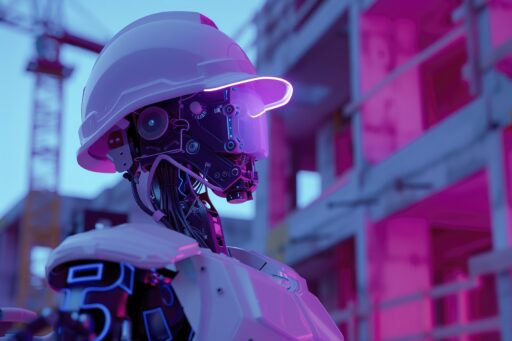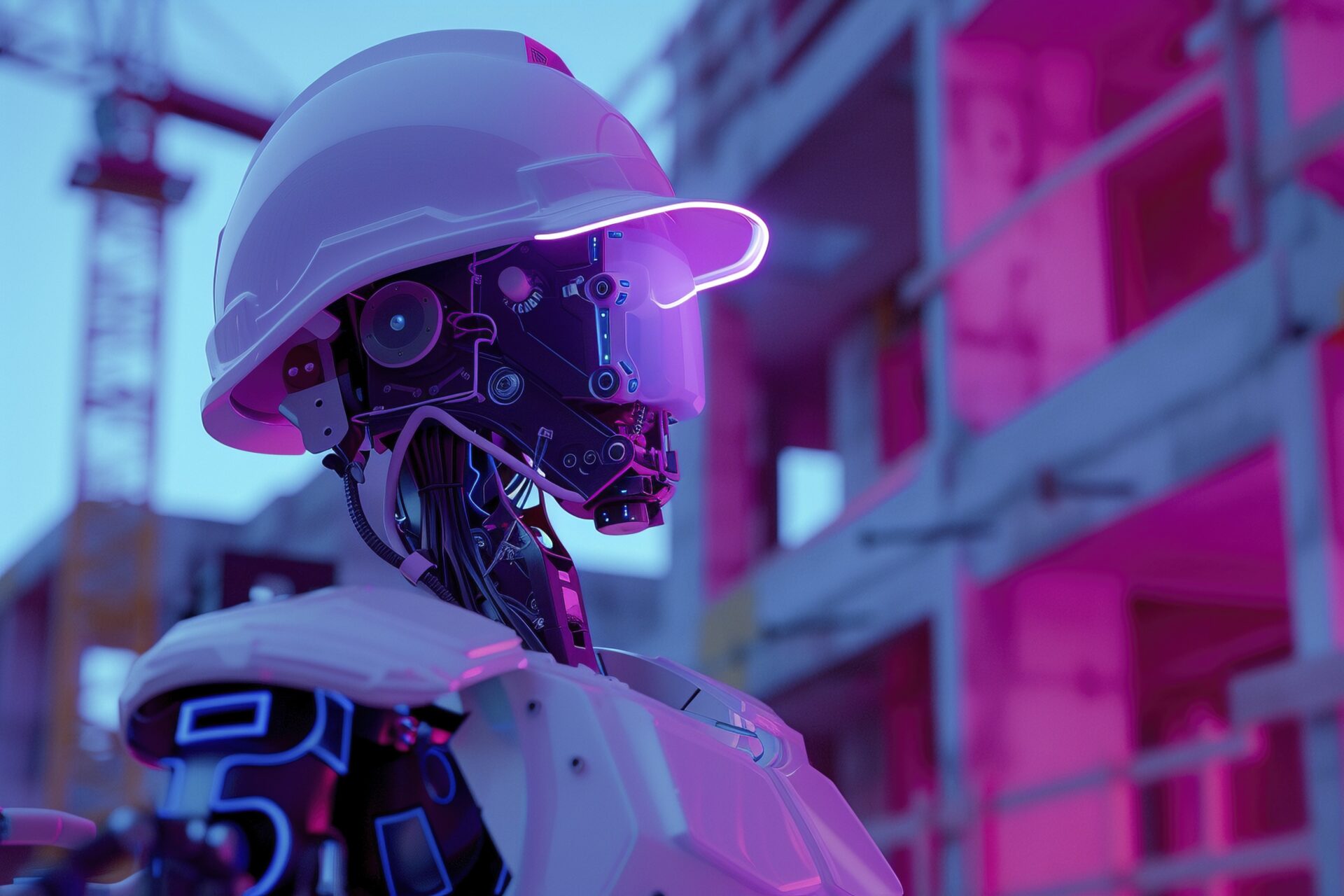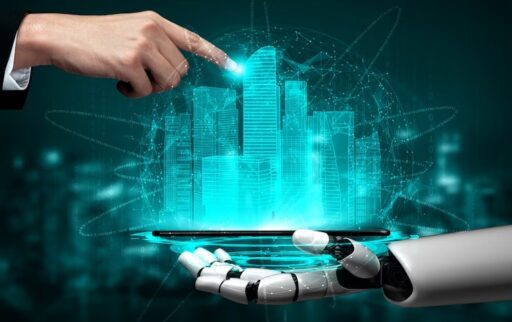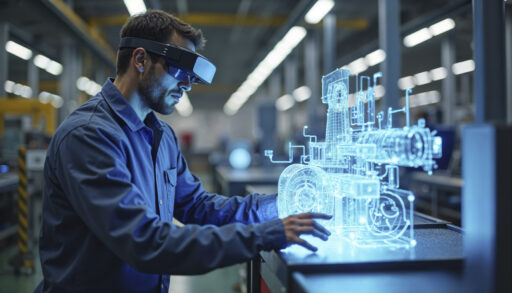Introduction
The integration of AI in architecture is transforming the way buildings are designed and constructed. AI in architectural design enables professionals to create innovative and efficient structures while reducing manual efforts. With advanced data processing and automation, AI is streamlining workflows, optimizing resources, and enhancing creativity. This technological evolution is paving the way for smarter, more adaptive urban environments.
How Architects Are Using AI?
Today’s architects are leveraging AI to streamline workflows, improve efficiency, and enhance creativity. AI-powered design tools assist in generating multiple design options in seconds, saving time and effort. In 3D modeling, AI automates complex design processes, helping architects visualize spaces with greater accuracy.
Moreover, AI is revolutionizing spatial planning by analyzing environmental factors and optimizing building layouts for better functionality and efficiency. This is particularly useful in creating eco-friendly designs, as AI can assess energy consumption and suggest sustainable materials, ultimately reducing a building’s carbon footprint.
AI’s Transformative Impact on the Design Process:

The architectural design process has always required a blend of creativity and technical expertise. With AI-driven design, architects can now generate and refine building models with incredible precision. AI technology assists in clash detection, ensuring that different building components work seamlessly together before construction begins.
By incorporating AI in architectural design, professionals can explore innovative forms and structures that maximize space, energy efficiency, and aesthetics. AI is also enhancing clash detection, preventing costly design errors and improving collaboration between architects and engineers.
AI in Construction Management:
Beyond design, AI is also transforming construction management. The implementation of AI in construction sites is improving safety, efficiency, and cost-effectiveness. AI-powered risk assessment tools analyze site conditions, identifying potential hazards before they become a threat.
AI software is also being used for predictive maintenance, which helps monitor the health of machinery and infrastructure, reducing downtime and unexpected failures. Additionally, AI enhances project safety by automating inspections and ensuring that construction activities comply with safety regulations.
How AI Works with Architecture Technologies?
AI is not just an independent tool—it works in harmony with various architectural technologies. The role of AI in architecture includes real-time collaboration, where teams can work on projects simultaneously, improving efficiency.
In AI in BIM (Building Information Modeling), AI helps architects analyze data-driven insights to optimize building performance. AI also enhances predictive analytics, allowing architects to foresee potential challenges and make data-driven decisions. Furthermore, building automation powered by AI improves energy efficiency and sustainability.
Benefits of Integrating AI in Architecture:
The adoption of AI in architecture offers numerous advantages. AI-powered design tools enable architects to explore generative design, creating optimized structures based on specific requirements. AI automation reduces repetitive tasks, allowing professionals to focus on creativity and innovation.
Moreover, AI contributes to building resilience, ensuring structures can withstand environmental challenges. AI predictive analytics enhances decision-making, and overall, the benefits of AI in architecture lead to increased efficiency, reduced costs, and more sustainable construction practices.
Challenges to AI Adoption in Architecture:
Despite its benefits, integrating AI in architecture and construction comes with challenges. One of the primary concerns is data breaches and ensuring secure data storage for architectural projects. Since AI relies on large datasets, maintaining privacy and security is crucial.
Additionally, many firms struggle with adopting AI design software due to the steep learning curve and high initial investment. Compatibility issues with existing architectural technologies also pose a challenge, making a smooth transition to AI-powered workflows difficult.
AI’s Impact on VR & AR in Architecture:
AI is playing a crucial role in enhancing architectural visualization through real-time rendering and augmented reality (AR). Augmented reality in construction allows architects and clients to experience immersive building previews, helping in site planning and early-stage decision-making.
AI-driven project visualization provides better insights into materials, lighting, and structural integrity before construction begins. These technologies ensure that architects and stakeholders can make informed choices, reducing errors and improving efficiency.
Future of AI in Architecture and Construction:
The future of AI in architecture and construction is promising, with rapid advancements in technology. Robotic construction is expected to revolutionize building processes by automating tasks such as bricklaying and 3D printing structures.
AI will also play a major role in project management, streamlining resource allocation and scheduling. Adaptive architecture, where buildings can adjust to environmental conditions, is another emerging trend. With ongoing AI trends, the industry is set to witness groundbreaking innovations in the coming years.
Best Examples of AI in Architecture Projects:
Several real-world projects showcase the power of AI in architecture. Companies are using AI-driven design to create futuristic skyscrapers, eco-friendly housing, and automated construction sites. AI-powered smart buildings use data-driven insights to optimize energy usage, improving sustainability.
One remarkable example is the use of AI in generative design, where algorithms explore thousands of design possibilities to create the most efficient structure. AI-assisted urban planning is also shaping smart cities by analyzing traffic patterns, green spaces, and energy consumption.
Conclusion:
The impact of AI in architecture is undeniable, from revolutionizing design and construction to improving project efficiency and sustainability. As AI continues to evolve, its role in architectural design courses and real-world applications will only grow stronger.
For those eager to explore AI’s role in architecture and how to integrate it into their skillset, CADD Centre offers industry-leading training programs. If you want to learn more, visit CADD Centre to explore our courses.
FAQs
What are the main benefits of using AI in construction?
AI in construction improves project efficiency, enhances construction site safety, enables predictive maintenance, and automates risk analysis. It helps construction companies save time, reduce errors, and manage resources effectively.
What challenges do architects face when adopting AI?
Key challenges include high implementation costs, data security risks, software integration issues, and a lack of trained professionals. Despite this, the long-term benefits of AI in architecture outweigh the hurdles.
What is generative design and why is it important in architecture?
Generative design is an AI-driven approach where algorithms generate multiple building models based on set parameters like space, light, materials, and cost. It’s essential for creating innovative, sustainable, and optimized designs.
What are some real-world examples of AI in architecture?
Many leading firms use AI for smart building design, 3D-printed homes, and eco-friendly architecture. Tools like Spacemaker and TestFit show how AI helps create efficient, modern urban spaces worldwide.
How can I learn AI for architecture and construction?
You can enroll in certified Architecture Design Courses at CADD Centre that include hands-on training in design, BIM integration, and advanced architectural tools. These industry-relevant programs are perfect for students and professionals aiming to build a future-ready career in architecture and construction





